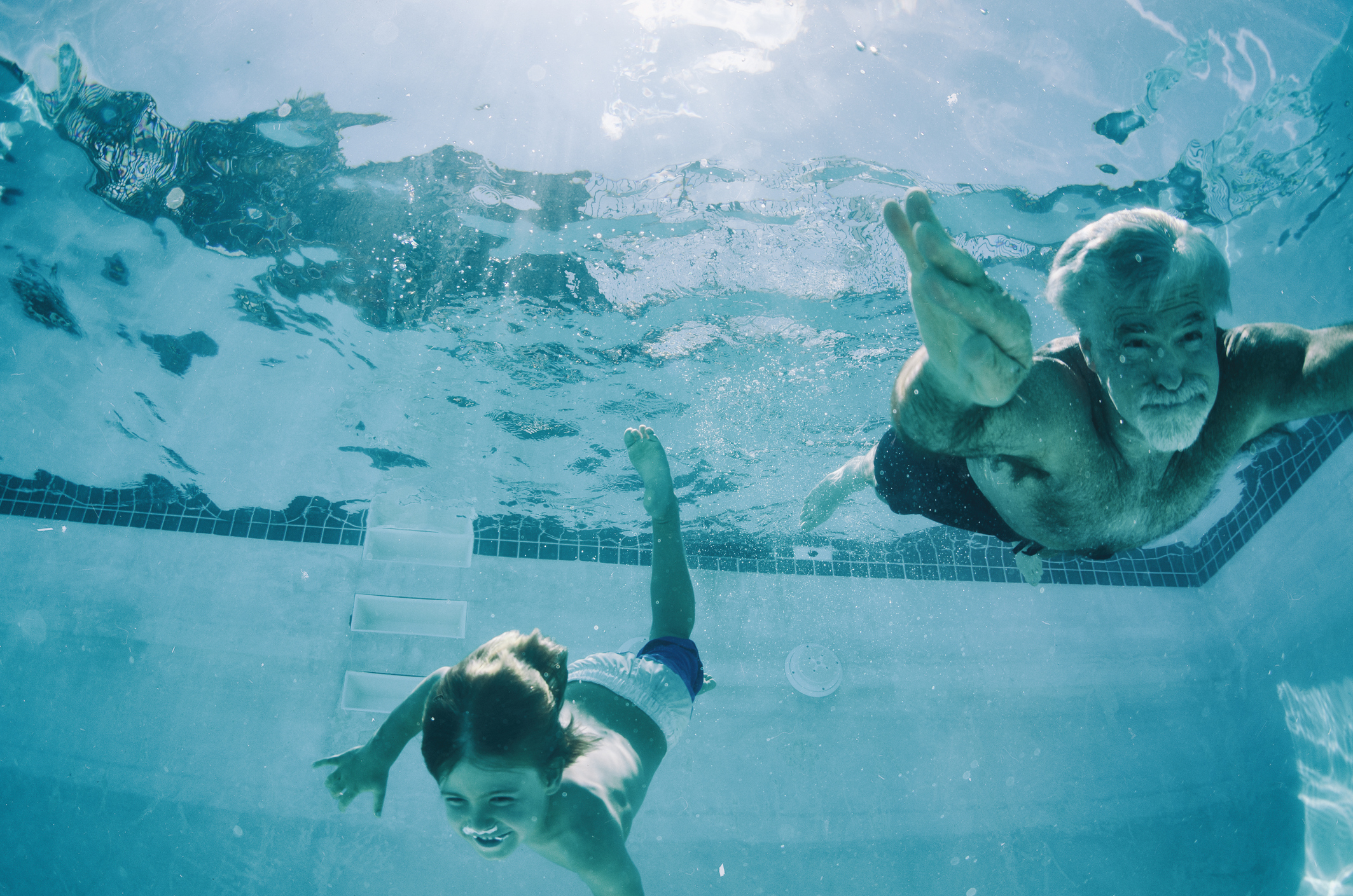Fear of water – what to do?
The technical term for the fear of water is aquaphobia. The term is a combination of the Latin word “aqua” (water) and the Greek word “phobos” (fear).
Aquaphobia is relatively common and affects both children and adults. Some people are afraid of deep water or strong waves, others fear swimming pools and bathtubs. There are many reasons for this. The symptoms can also vary. Those affected experience trembling, weak knees, tightness and even heart palpitations and panic attacks.
Here are some tips and tricks to make it easier to get into the water and overcome your phobia.

For adults
- Build confidence in your own abilities: Adults can boost their self-esteem through self-affirmation and positive self-talk. Remind yourself of previous successes and skills you have and transfer this confidence to the water.
- Start slowly: Start with shallow water or in a swimming pool with a low water level. Gradually increase the depth as you feel more comfortable.
- Learn breathing techniques: Learning breathing techniques, such as controlled breathing and exhaling underwater, can help you feel more confident in the water.
- Take swimming lessons: Professional swimming instructors can help adults learn the right techniques and overcome individual fears. A structured classroom can be a safe place to develop new skills.
- Use relaxation techniques: Breathing exercises or meditation can help to reduce stress and anxiety, which in turn can be helpful when swimming.
- Use buoyancy aids: Buoyancy aids such as swimming noodles or a Restube can provide adults with additional safety while improving their swimming skills.
- Seek company: Start by swimming with an experienced swimmer or take part in group activities to feel more confident and learn from others.
- Gather information: Find out about water safety measures and techniques. The more you know about swimming, the better you can rationalise and overcome your fears.
- Create positive experiences: Celebrate small progress and successes in the water to boost your confidence and encourage a positive attitude towards swimming.
- Be patient and take your time: Overcoming fear takes time and practice. Be patient with yourself and take the time you need to feel comfortable in the water.
For children
- Build trust: Show your child that you are there for their safety. Use reassuring and supportive words to establish trust.
- Slow approach: Start with small steps by slowly getting your child used to the water. This may mean staying at the edge of the pool or on the beach before venturing deeper.
- Fun in the water: Make being in the water a positive experience by playing games or splashing around together. This helps to develop a positive association with water.
- Use swimming aids: Buoyancy aids such as water wings or swimming noodles can give your child additional safety and help them to feel comfortable in the water. However, stay close to your child! Buoyancy aids are no guarantee against drowning.
- Joint activities: Take part in water activities together to show your child that the water can be fun and not a threat. The shared experience also strengthens the bond between parents and child.
- Positive role models: Show your child other children or adults who are already safe in the water. This can help to reduce fears and strengthen trust.
- Swimming lessons: Register your child for swimming lessons. Professional swimming instructors can teach your child the right techniques and help improve their skills in the water.
- Keep calm: Stay calm and composed yourself, even if your child is anxious. Your calmness is often transferred to your child and can help them to feel more secure.
- Celebrate successes: Praise your child for small advances and successes in the water. Positive reinforcement can help to boost your child’s self-confidence and reduce their fear of the water.
- Be patient: Every child is different and it can take a while before they feel comfortable in the water. Be patient and give your child the time they need to overcome their fear.
Over time, a series of small successes will build your and your child’s confidence so that new water-related activities can be integrated into your sports programme.






